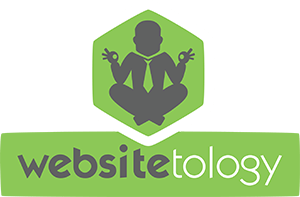A common complaint we get about using WordPress to run a site is “I don’t want my site to look like a blog” which generally means- I want the same old content up – and nothing ever changes. Chris Pearson talks about the Information Architecture of RSS – and how it can stop readers from finding content- Pearsonified | Best damn blog on the planet.
It’s worth reading- as are the comments- but, here is what Chris is missing- there are only 3 ways people find your site:
- You spend a ton of money building your brand and promoting your URL
-or-
- They find your site through search- which means you have great content and great search engine placement
-or-
- you’ve built great link networks, or are heavily linked to (hopefully not by spamming comments)
That’s it- once they find you- they either bookmark (favorite) you conventionally- or they subscribe to your feed. If they do the former- they may never come back- if they do the latter- hopefully, they’ll keep coming back as long as you deliver the content that interests them.
If they are smart enough to use RSS- then they know they can search your site for more data- a different layout, or navigation structure won’t matter at all.
However, after reading this, it made me want to add some plug-ins for most commented articles to The Next Wave site.
My solution, would be to use a variation on webstats to drive the most popular pages- not based on comments- or, to put some kind of rating system into the post options- so that you could use a theme switcher type plug in to re-order the site in different ways.
Either way- read what Chris wrote- it should get you thinking.
On Tuesday, we had a full day of seminars. Intro Blogosopher in the morning, and the first WordPress advanced in the afternoon. To showcase the power of categories in WordPress to gather ideas in several posts into a super post- I searched The Next Wave news blog for anything about the super hot agency “Crispin Porter + Bogusky” in Miami and created a new category of the same name.
 We searched Google for any mention of The Next Wave when searching for “Crispin Porter Bogusky” and gave up after the 300 th or so reference (30 pages in). Today I added a post about “CB+P” to the site- and then went to Google again a few hours later. We were now number 7! And that is out of 176,000 results. A few articles above ours, was a great article about CP+B from Business Week– so we used the “Press-it” function of WordPress to add yet another post to the site.
We searched Google for any mention of The Next Wave when searching for “Crispin Porter Bogusky” and gave up after the 300 th or so reference (30 pages in). Today I added a post about “CB+P” to the site- and then went to Google again a few hours later. We were now number 7! And that is out of 176,000 results. A few articles above ours, was a great article about CP+B from Business Week– so we used the “Press-it” function of WordPress to add yet another post to the site.
The goal is to get to the top of Google, using real content, instead of nested pages, or paid postion, to be next to the hottest ad agency in the world. Of course, we think we’re the second hottest agency- along with half the agencies in America- but the difference is- we’ve figured out the secrets of search- and content management- and even Crispin hasn’t got that part quite mastered.
If you want to learn how to get your site, and yes, we’ll even teach other ad agencies, to the top of Google- without paying for it, you need to attend one of our seminars.
The link above is to an article in Wired about Navizon a really cool combination of several technologies: GPS, SmartPhones, and web 2.0.
Search engines are getting better at localization- ie finding content that is relevant to your specific area- but, there is still a lot of room for improvement. Google Local will be giving the Yellow Pages people a run for their money- however, the key addition of geographic tags to content is still not an established standard.
The Wired article explains how a really bright guy, Cyril Houri, figured out how to augment GPS information by using the locations of cell phone towers and triangulation. The problem with GPS is it doesn’t always work inside buildings – but cell phones do. By coupling the location functions of a cell phone, with the known GPS coordinates of the towers, he’s turned these phones into ways to annotate a site – navizon- or allow you to post data from your cell to a site- complete with GPS coordinates- really handy for a restaurant finder- or just letting people know where you are.
Read the article for another look at the future of the web- and how technologies are converging to create new ways to use data and create opportunities to increase your business.

